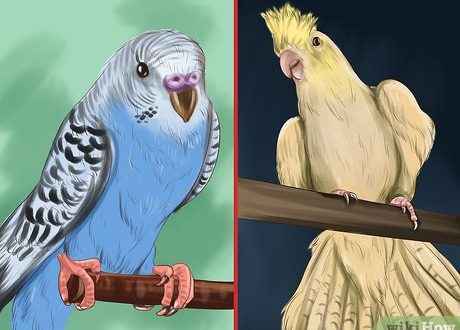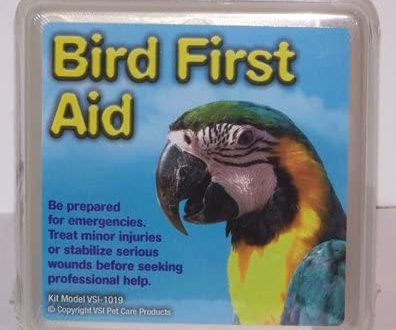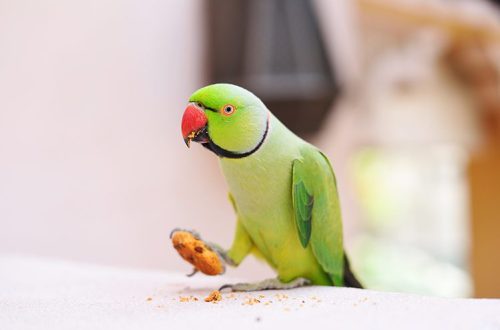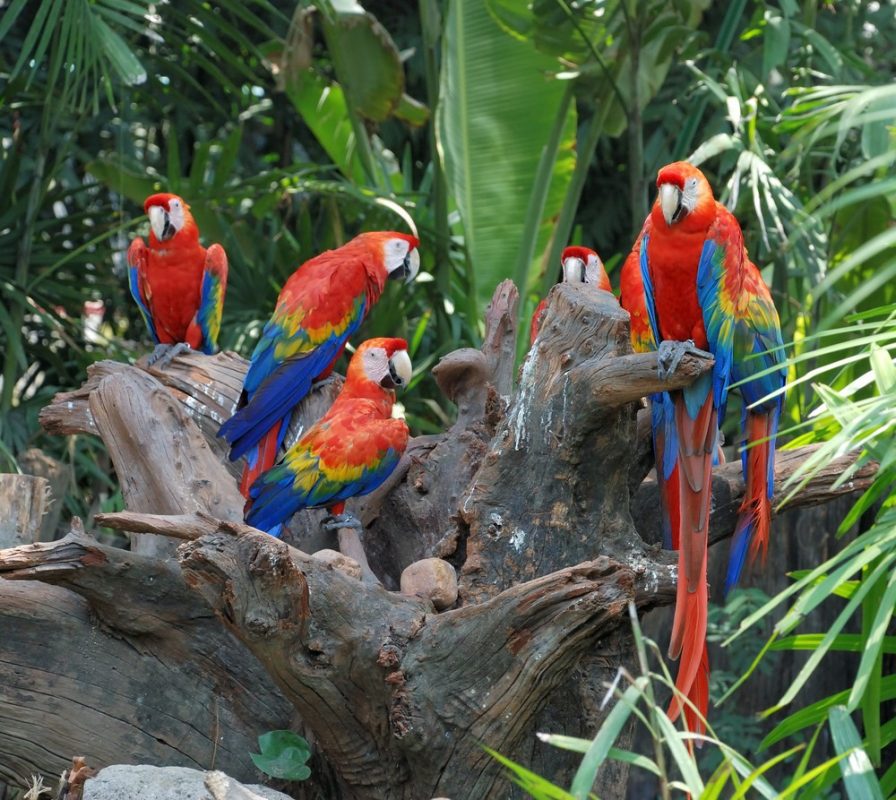
Where do parrots live
Today, parrots can be found in all corners of our planet. They say that Australia is the “stepfather home” for all species, although these birds are common on all continents, not counting Antarctica and Europe. Traveling through South and Central America, India, Southeast Asia, West Africa and Australia, you have the opportunity to see how incredibly beautiful and smart parrots can be. But, of course, in order to admire the birds in their natural habitat, it is not necessary to pack your bags – thanks to technological progress, every person has the opportunity to plunge into the world of parrots.
Parrots prefer to live in subtropical and tropical climates, so the Southern Hemisphere is the optimal region for the life of these birds:
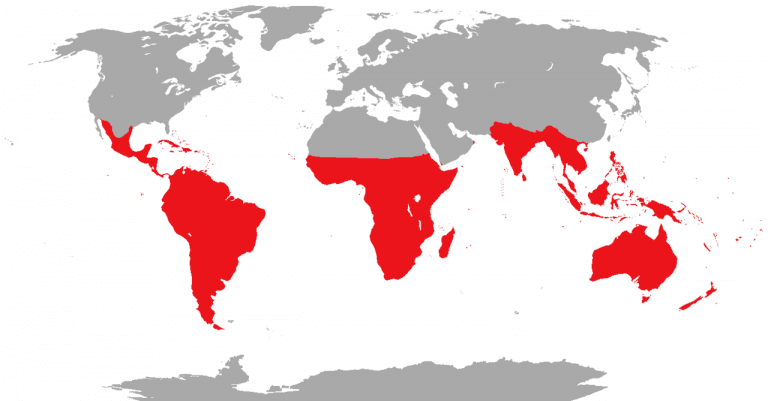
As the lighter hues on the map fade to darker, we can conclude that the largest variety of parrot species lives in South America and Australia:
There are more than 370 species of these amazing birds around the world.
Where parrots live according to their families will be well shown by a world map with indicators of specific bird species:
Basically, parrots keep in flocks and groups, by their nature they are monogamous birds, which, when favorable conditions arise, unite in pairs, create housing using the hollows of eucalyptus trees, burrowing burrows or inhabiting rock crevices. Birds have time to raise a new generation of parrots, as soon as the weather allows for carefree mating games and good nutrition for the whole family.
Unusual Parrot Habitat
Cities and farms gradually take over the native territories of parrots, and they are forced to either adapt or look for a more suitable place to live.
In some metropolitan areas, birds have to fight for every tree and expand their dietary preferences, which in turn is detrimental to health and life expectancy. Considering that in nature, for example, such a species as a macaw has only two chicks in its offspring, and since most often only one baby survives, in the presence of unusual extreme survival conditions, the population of this bird species is under threat of extinction.
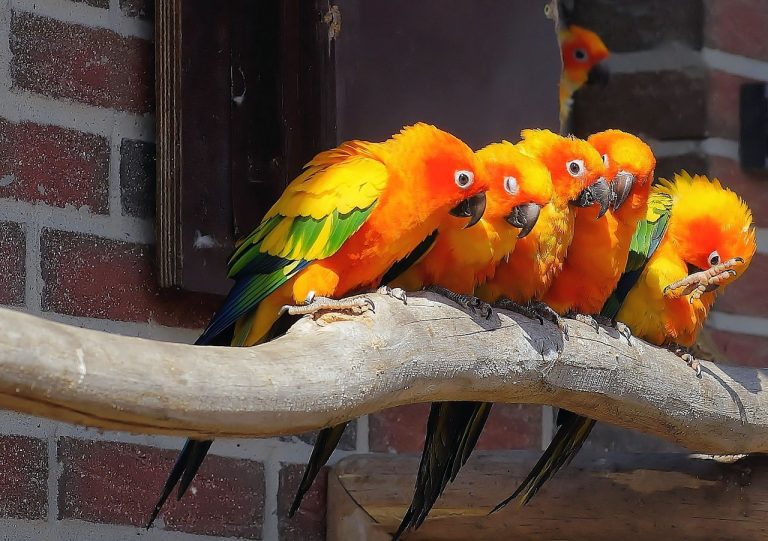
With the successful adaptation of a bird in unusual conditions for it or in a climate alien to it, a person can bear the losses. Parrots, like locusts, are able to sweep away the fruits and crops they like on their way. After all, the life of entire populations is at stake. Therefore, an attempt to adapt birds to new conditions of existence often ends in failure for both people and birds: in search of water and food, parrots raid agricultural land, which causes damage to farmers, who, in turn, develop methods to combat new pests.
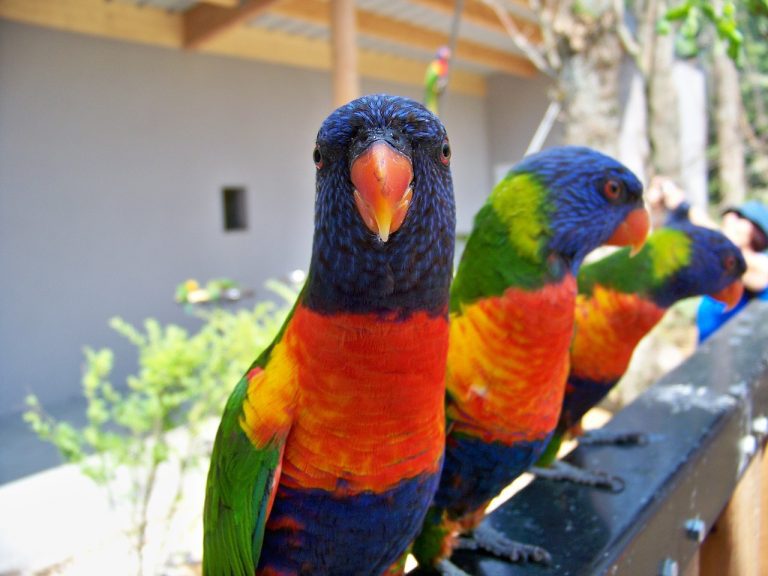
There are more than 13 species of parrots in California in America, they are perfectly suited to the climate of this country, although it is not their home. In Germany, in Stuttgart, about half a hundred Amazon parrots live, which endure an unusual wintering with temperatures down to -6 degrees. In the North of England, there has been a nursery of red-tailed Macaws for several decades, the birds live in freedom, but, thanks to competent care for them, they try to stick to one territory.
Since parrots learned to survive in urban environments, their population in the wild has declined dramatically.
Where do budgerigars live
Home of budgies – this is, of course, Australia, a continent with difficult living conditions for these inquisitive and cheerful birds. Here, flocks of budgerigars can be found almost throughout the entire continent, except for the southwest and northeast, where the Cape York Peninsula with its closed tropical forests is located.
The habitat of budgerigars is areas covered with shrubs, grassy plains, eucalyptus forests and mountain ranges, as well as areas near streams, which dry out depending on the season. For this reason, birds lead a nomadic lifestyle, they are real masters of survival in extreme conditions.
When there is no precipitation for a long time, thirst and hunger pushes the birds on long flights, sometimes parrots cover very impressive distances until they meet a temporary reservoir, where the birds immediately settle down and restore the population.
After the first heavy rains, the parrots choose the area next to the river or stream that appeared due to the downpours and build their nests for a while. In the hollows of trunks and thick branches of eucalyptus trees, a couple of parrots give birth to offspring. Having food, water and shelter nearby. Colonies of budgerigars try to replenish their numbers as much as possible, because losses during a drought period can be very impressive. If the rains are still going on, then the parrots may lay their eggs a few more times.
In Australia, where budgerigars live, in addition to difficult climatic conditions, there is a threat from birds of prey and animals, so parrots are very hardy and quick-witted, weak and scattered in nature – they do not survive. Birds always tend to stay in colonies or flocks, and during the nesting period they become neighbors in order to provide themselves with maximum protection and peace of mind.
Macaw habitat
Macaws are native to the tropical forests of Central and South America, as well as the islands of the Caribbean. But some populations have lost the opportunity to live in their native territory due to the expansion of the human habitat. Many species of these beautiful and bright creatures have been destroyed by people for several decades.
The exotic bird trade, the value of its plumage and the destruction of its habitat have led to the fact that today, in some countries, reserves and nurseries are being created to grow rare Ara parrots and preserve all their remaining species.
A nursery for red macaws and other rare species of parrots has been organized in Mexico. A group of people raise chicks and prepare them for life in the wild, people are trying to save this species from extinction in their country.
Hyacinth Macaws are an endangered species. Most of these parrots live in vast swampy areas, the rest are scattered throughout Brazil, Bolivia and Paraguay. In nature, they have disappeared from many of the territories they previously occupied.
Females and males of adult Macaws do not differ in plumage color from their chicks. You can determine the sex of a bird using blood tests, DNA (for this you need a fresh feather that has not fallen out on its own) or a smear from the cloaca, but outwardly it is almost impossible to find differences between individuals. The most accurate analysis is carried out using an endoscope, at this moment the bird is under anesthesia, while the ovoscope is used to diagnose the sex of the bird’s egg.

Macaw parrots live in large flocks, but there are also certain species that prefer, having chosen a partner for themselves, to live with him all his life away from other couples. For the nest, these large parrots choose a tree trunk with a hollow, which they expand with their beak. Birds prefer to use their home for many years.
If you take just a few steps to meet the parrots and listen to their territorial preferences, the cohabitation of wild parrots and humans will become acceptable for such different inhabitants of the same planet.



